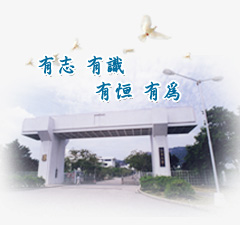
工学院工程学术研究论坛(第442期)
来源: 时间:2019-11-18 02:48
报告主题:The Application of Deep Mixing Method in Enhancing the Engineering Properties of Soft Soil
主讲人:Ahmad Safuan A Rashid (马来西亚理工大学)
时间:11月20日上午10:00-12:00
报告地点:工学院会议室(行政中心213)
主讲人简介:
Associate Professor Ahmad Safuan A Rashid obtained his PhD degree in Geotechnical Engineering from The University of Sheffield in 2011, with a Malaysia Higher Education Scholarship. Now he is an Associate Professor and Associate Chair for School of Civil Engineering, Faculty of Engineering, Universiti Teknologi Malaysia. He also is the Head of Geotechnical Research Group and Fellow of Centre of Tropical Geoengineering that providing a research and consultation work on geological and geotechnical engineering for the tropical area.
The major research area of Associate Professor Ahmad Safuan is on the ground improvement technique. He has published more than 110 referred journal papers. Associate Professor Ahmad Safuan has secured several competitive research grants over RM 4 millon and involved in several consultations work worth RM 2 million. He has successfully supervised 3 PhD to their completion and currently is supervising 9 PhD students.
讲座摘要:
The Deep Mixing (DM) method is a stabilisation technique that uses cement as a stabilisation agent to improve the bearing resistance of soft soils. DM column groups are extensively used in practice to stabilise foundations of lightweight structures. Despite its widespread application by the industry, current state of the art indicates that further research is necessary to provide an enhanced understanding of the technique with regard to the failure mechanisms of the column and to improve the prediction of DM performance in the field. A series of physical model tests at, 1g, was performed to investigate the effect of external load condition on the failure behaviour of the improved ground. The tests were conducted under rigid and flexible footings and considered unreinforced and reinforced samples with fully penetrated and partially penetrated columns having different area replacement ratios and varying strengths. Particle Image Velocimetry (PIV) and close-range photogrammetry were used to plot and measure the soil displacements and the failure mechanisms. LimitState:GEO software which is based on Discontinuity Layout Optimisation (DLO) was used as a tool to validate the bearing capacity factor improvement in the laboratory tests. A linear and non-linear relationship was established between the bearing capacity factor and the ratio of the average strength of improved ground with the strength of surrounding soil for fully and partially penetrating columns respectively. A series of preliminary design charts for fully and partially penetrated columns has been produced by considering several practical guidelines of DM construction. Several parameters have been considered in developing the design charts such as improvement area ratio, cohesion ratio and the geometry of the improvement area and foundation. A worked example using these charts demonstrates its potential benefit to the construction industry when designing DM columns.
请工学院土木系的老师、研究生和本科生参加,欢迎其他有兴趣的师生参加!
工学院
2019年11月15日


